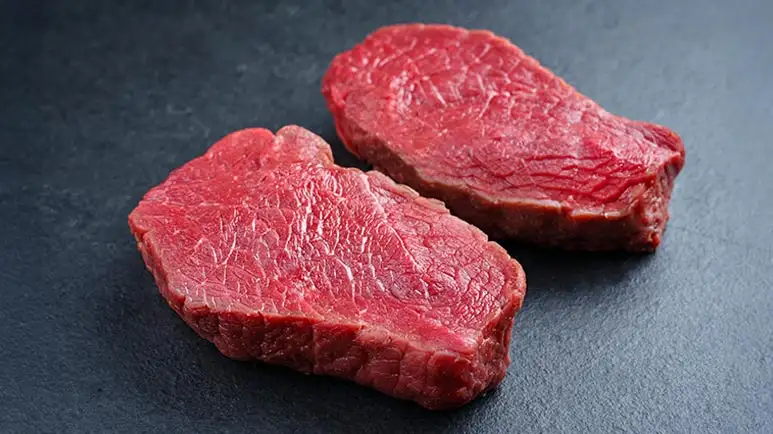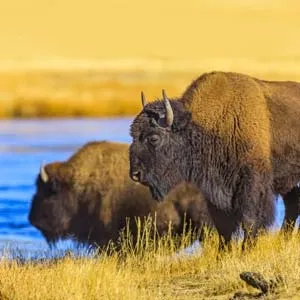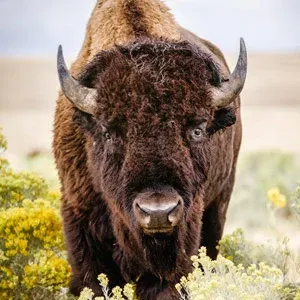Bison Meat: This Game Meat Might Be the Nutrient Boost Your Pet Needs
If you're looking for an alternative to the usual types of meat you use in your pet's treats and meals, consider this wildly healthy novel protein source. Discover more about its benefits to your pet's health here.

STORY AT-A-GLANCE
- Bison can be a nutritious treat for pets or component of a homemade diet, in conjunction with other ingredients that comprise a nutritionally complete meal
- This meat is described as “lighter, coarser, and tastes slightly sweeter,” compared to beef, without any gamey flavor or an aftertaste. Nutrient wise, it’s slightly superior to beef too
- Bison is an ideal protein to try for pets with food sensitivities
Editor's Note: This article is a reprint. It was originally published March 1, 2021.
With people on the lookout for healthy protein options, one type of meat has been making headlines recently: bison. Called “America’s original red meat,”1 bison is becoming popular among people who are looking for alternatives to grass fed beef, and bison matches up perfectly — it’s lean, organic and sustainable. And the great news is it’s also good for your pets!
What Is Bison Meat, and What Does It Taste Like?
Bison meat can be a nutritious treat or a component of a homemade diet, in conjunction with other ingredients that comprise a nutritionally complete meal. This protein comes from bison, which are bearded, heavy land animals indigenous to the Great Plains of North America. They are grazers that feed on grasses, twigs, shrubs and herbs.2 However, they are often mistakenly called buffaloes, which are actually a different type of animal, though these two do belong to the same animal family (Bovidae).3
Cooking Light describes bison meat as “lighter, coarser, and tastes slightly sweeter,” compared to beef, without any gamey flavor or an aftertaste.4 Nutrient wise, it’s slightly superior to beef too,5 which is why this healthy, human-grade food will make a fantastic treat for pets.
One common myth about bison meat is that it’s harder to cook than other meats. The truth is, bison is as simple to cook as other meats, including beef, and because bison has less fat than beef, it cooks slightly faster.6
When fed as a treat or snack, bison can constitute up to 10% of your dog’s or cat’s daily caloric intake. Since very few pet foods use bison in their composition, it’s considered a novel protein source for pets, which may be ideal for those who have allergies to common proteins like chicken. This is why bison is a main protein recommended in some limited ingredient diets.7
Where Do Wild Bison Live?

Wild bison can be found mostly in conservation areas, preserves or farms in the U.S., Canada and Mexico. As for European bison, they can be found in Russia, Slovakia, Ukraine, Poland, Belarus and Lithuania.8

Bison Meat Is a Rich Source of Protein
According to the website Dog Food Guide, bison is a leaner protein source compared to beef and other meats that are raised commercially, making it a great ingredient for making wholesome snacks and treats for your pets.
Bison’s protein content is slightly higher than grass fed beef, at 2.65 grams per 1-tablespoon serving, compared to beef’s 2.46 grams per 1-tablespoon serving.9,10 It’s also healthier, as the animals are traditionally ranch-raised and are not given growth hormones and antibiotics,11 unlike meats from livestock raised in concentrated animal feeding operations (CAFOs).
Did You Know?

Bison are the largest land mammal in North America. They can weigh between 30 and 70 pounds at birth. As adults, the “bulls,” or male bison, can weigh up to 2,000 pounds and grow as tall as 6 feet. Females, or “cows,” are smaller, weighing up to 1,000 pounds, with a height of 4 to 5 feet.12
Your Pet Can Get Omega-3s from Bison Meat
Bison meat can also give your pets omega-3 fats, and as with grass fed beef, grass fed varieties of this meat offer more omega-3 fats than conventional beef.13 Omega-3 fatty acids offer a number of benefits for pets, such as aiding proper development of the retina and visual cortex, alleviating allergies brought on by an overactive immune response and regulating blood clotting activity.
Bison Meat Is a Good Choice for Pets with Food Allergies
“Bison can be used as an alternative for pet treat recipes that call for beef or chicken. You can feed different varieties of bison meat, such as fresh, raw, dehydrated or freeze-dried.”
Bison treats may be ideal for dogs with food sensitivity or allergies. According to PetfoodIndustry.com’s database, 58 dog and cat food brands make use of this meat.14 If you plan on making your own homemade treats, fresh raw bison meat gives you more freedom to experiment on healthy recipes.
Try This Bison Healthy Treat Recipe for Your Pets
If you’ve got some fresh bison on hand, you can try making this healthy snack for your pet. It only uses two ingredients, and your dogs (and cats) will love them.
Chia Chunks Pet Treats Recipe
Ingredients:
- Chia seeds
- Free range, grass fed bison
Procedure:
- Cut meat into bite-sized pieces.
- Roll in chia seeds.
- Place on ungreased baking sheet.
- Bake at 350 degrees F (176 degrees C) for 10 minutes.
- Let cool and store in your refrigerator for up to a week or in your freezer for a month.
As Much as Possible, Choose High-Quality Grass Fed Bison Meat
When you purchase bison, look for those that are labeled “wild” and “grass fed,” as some manufacturers are commercially raising these animals in concentrated feedlots, which may compromise their quality.15 In addition, purchasing wild and grass fed bison ensures that you’re getting a product that’s produced by ranchers that adhere to strict guidelines that help protect the ecosystem. According to Dave Carter of the National Bison Association:16
“As a part of that philosophy, we don’t use artificial insemination, castration, or other procedures widely used with domesticated livestock. Federal regulations prohibit added growth hormones in bison, and our Code of Ethics prohibit antibiotics to promote growth.”
Fun Facts About Bison

The complete scientific name of bison is actually Bison bison bison — genus: Bison, species: bison, subspecies: bison.17 But saying it once is fine! It’s a Latin word that means “wild ox.”18
Additional Bison Meat Storage Tips
If you have leftover uncooked bison meat, make sure to store it in the coldest part of the refrigerator. Ground meat can be used for up to two days, while steaks and roasts can stay fresh for four days. When frozen, bison meat can be used longer, up to 12 months, as long as it’s packaged properly. Seal it tightly in freezer paper and then foil or polyethylene film. You can cook it frozen, but you’ll have to add one-third to one-half to the cooking time.19
Sources and References
- 1 National Bison Association
- 2 National Geographic, American Bison
- 3 Encyclopaedia Britannica, What's the Difference Between Bison and Buffalo?
- 4 Yahoo, Cooking Light, November 9, 2017
- 5 Onnit, November 12, 2020
- 6 Foxhollow Farm, Debunking Three Myths About Bison
- 7 K9 of Mine, May 12, 2022
- 8 LiveScience, August 26, 2017
- 9 USDA Food Data Central, Bison, ground, grass-fed, raw
- 10 USDA Food Data Central, Beef, grass-fed, ground, raw
- 11 Dog Food Guide, December 5, 2023
- 12,17 US Department of the Interior, May 9, 2016
- 13 J Anim Sci Biotechnol. 2023; 14: 49
- 14,16 PetfoodIndustry.com, Bison: sustainable and novel pet food protein
- 15 HuffPost, August 4, 2010
- 18 San Diego Zoo Wildlife Alliance Library, American Bison (Bison bison) Fact Sheet: Taxonomy & History
- 19 Bison Producers of Alberta, Storage and Cooking Bison











